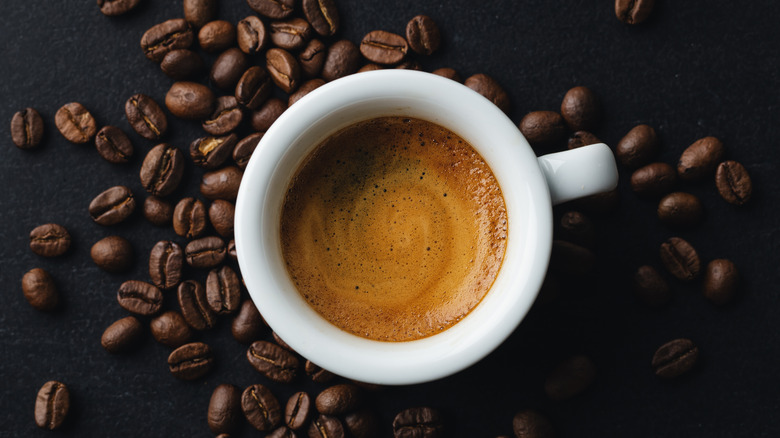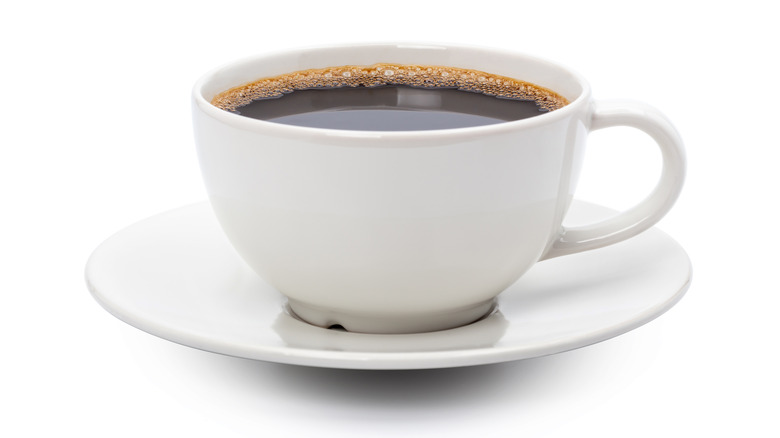The Case For Scooping The Crema Out Of Your Espresso
Sometimes, a cup of high-quality espresso is all you need to start your day. And though it is usually served in small portions, it can certainly pack a caffeinated and flavorful punch. Approximately 40 milligrams per ounce of caffeine can be found in one shot of espresso, which also has characteristics of acidity, sweetness, and bitterness, per Kicking Horse Coffee and Higher Grounds Coffee.
Another feature of espresso lies in the thin layer of light brown foam on top. This is called "crema," and in layman's terms, it's a mixture of fats and oils (from the coffee) and "microbubbles of carbon dioxide (CO2)," via Urnex. According to Amora Coffee, crema was first introduced in 1948 when Achille Gaggia made an espresso machine that could add a layer of "scum" on top of the beverage. Coffee enthusiasts had never seen this before and were skeptical at first. However, after Gaggia utilized the power of marketing and proclaimed that this "scum" was "caffe creme," suddenly, everybody started to enjoy their espresso even more.
But there's been some debate in the coffee world over whether or not crema should be scooped out. Some like the foam on top, but here's why you should consider removing it or mixing it into the espresso instead.
Crema leads to more bitterness
If your espresso is overly bitter, you might want to scoop out some or all of the crema on top. This is because of all the CO2, which results in flavors that are "dry, ashy, [and] overpoweringly bitter," per Food52. Such bitterness also masks and overwhelms the identity of espresso, so when you remove it, the beverage should taste much lighter and well-balanced, via Food & Wine.
Granted, some coffee experts use the crema to evaluate how good or bad the beverage is. But this only seems to be significant if a manually-operated machine made the drink. As Amora Coffee puts it, automatic espresso machines have become very good at "faking" crema in the beverage, so overall, it doesn't seem to play a huge role in its quality as it used to.
Swedish Barista Champion Steven Moloney also believes crema should not be used as an indicator of espresso's quality (via Urnex). As they explain, crema can't save a poorly-made cup of coffee, even if the crema itself looks pretty. Think of this like the latte art you see on social media pages. Even if it looks beautiful and intricate, it doesn't tell you how good or bad the drink will taste.
So give this a try next time you order an espresso. Sure, you won't have the frothy foam on top for aesthetic and textural purposes, but the beverage should taste much less bitter.

